From gravel to asphalt, we deliver driveway materials fast — making new installs or upgrades simple, smooth, and right to your site.
Ideal when you’re resurfacing an existing driveway.
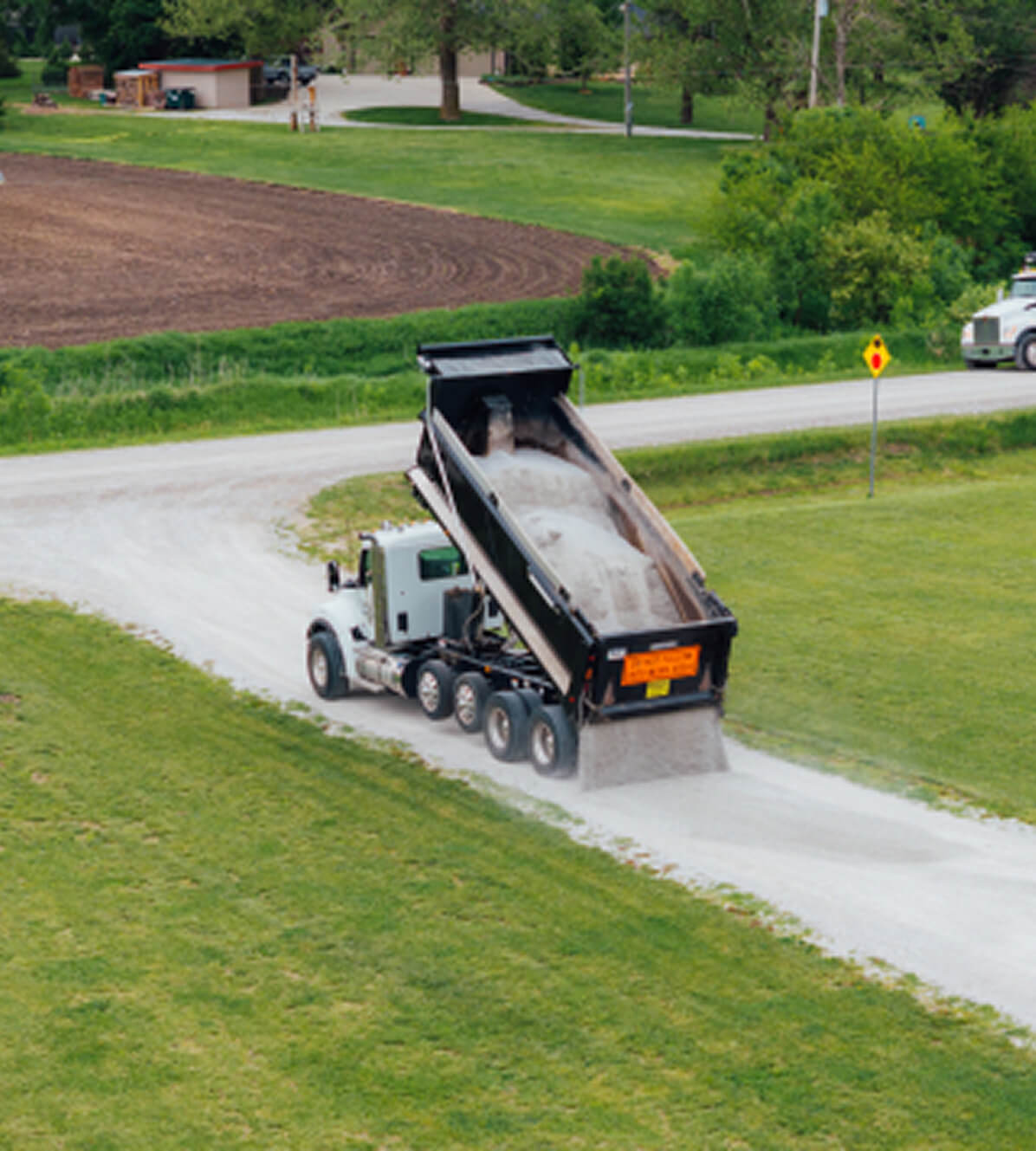
Where to Use:
Perfect for refreshing existing residential and light commercial driveways. Performs well on moderately draining soil.
How to Use:
Apply 2–3 inches over a compacted base. The angular stone packs tightly for a smooth and stable finish.
Why Choose It:
Affordable, long-lasting, and easy to maintain. Great traction and reduced dust compared to finer materials.
Where to Use:
Perfect for refreshing existing residential and light commercial driveways. Performs well on moderately draining soil.
How to Use:
Apply 2–3 inches over a compacted base. The angular stone packs tightly for a smooth and stable finish.
Why Choose It:
Affordable, long-lasting, and easy to maintain. Great traction and reduced dust compared to finer materials.
Where to Use:
Best for driveways in areas with moderate rain or clay soil. Offers clean appearance and great drainage.
How to Use:
Spread 2–3 inches over a compacted base layer.
Why Choose It:
Bright, clean look with superior drainage. (Note: This stone is screened, not washed.)
Where to Use:
Common on rural roads and driveways needing solid traction.
How to Use:
Apply 2–3 inches over an established base.
Why Choose It:
A reliable, compactable stone that performs well in dry conditions or for heavier-use driveways.
Where to Use:
Used for farm drives or properties with larger vehicles and equipment.
How to Use:
Install 2–3 inches as a top layer over a suitable base.
Why Choose It:
Thicker stone size offers more durability for heavy equipment and higher weight loads.
Where to Use:
For rural or sloped driveways where better drainage is needed.
How to Use:
Spread 2–3 inches as a finishing layer or under a finer topcoat.
Why Choose It:
Drains exceptionally well, and angular edges help it stay in place on inclines.
Where to Use:
Cost-effective top coat for residential, farm, or rural driveways.
How to Use:
Apply 2–3 inches on top of an existing driveway or new base.
Why Choose It:
Eco-friendly and budget-friendly alternative to traditional gravel. Packs well and holds up over time.
Where to Use:
Excellent for homeowners who prefer less dust and a darker, finished appearance.
How to Use:
Apply 2–3 inches over a compacted base layer.
Why Choose It:
Reduced dust, firm surface, and a rich black finish. Great for curb appeal and stability.
For use on fresh dirt or newly graded areas.
Where to Use:
Used as a second base layer or in drier conditions where moderate drainage is needed.
How to Use:
Install 3–5 inches and compact before adding surface rock.
Why Choose It:
Stable and versatile, with better drainage than finer roadstone.
Where to Use:
Ideal for new driveways on soft or wet ground. Performs well on clay-heavy or poorly draining soil.
How to Use:
Apply 4–6 inches as the base layer. Compact before adding top coat.
Why Choose It:
Provides strong structural support and excellent drainage. Prevents rutting and shifting.
Where to Use:
Good for general-purpose base construction on solid or semi-solid soil.
How to Use:
Apply 4–6 inches and compact thoroughly.
Why Choose It:
Less expensive than clean limestone and easier to compact.
Where to Use:
Great for rural properties, low-traffic areas, or customers wanting a more sustainable option.
How to Use:
Use 3–6 inches as a compacted base.
Why Choose It:
Recycled material that’s budget-friendly and performs similarly to traditional roadstone.
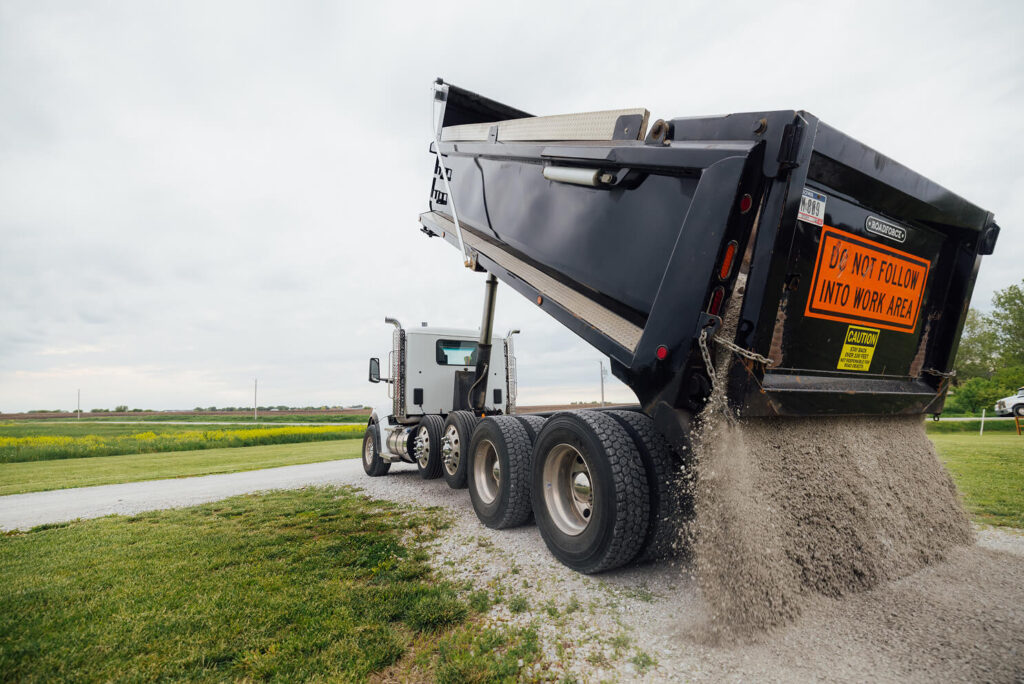
The base layer is the most critical part of any long-lasting driveway. It provides the structural support, drainage, and stability needed to prevent potholes, shifting, and erosion.
Any product can work, but based on performance and cost, we recommend the materials listed below.
If you’re using roadstone as your base, we highly recommend placing a landscaping barrier tarp underneath:
After the base is compacted, apply a top coat (see options above) for a clean finish, improved traction, and reduced dust.
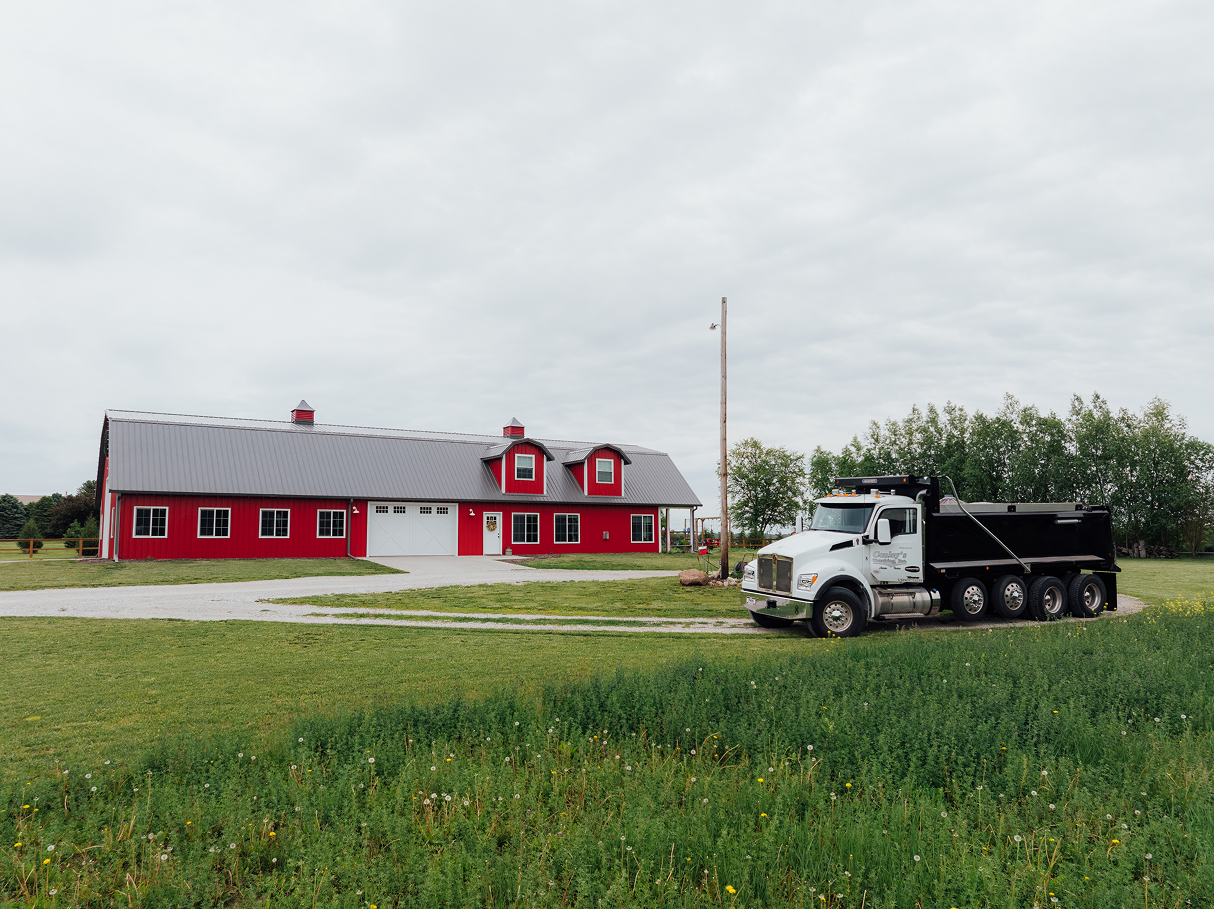
Tailgate Spreading: We can evenly spread material as we drive forward — perfect for residential driveways and base layers. While it’s not precision grading, it’s a convenient option for many projects.
Tailgate Spreading: We can evenly spread material as we drive forward — perfect for residential driveways and base layers. While it’s not precision grading, it’s a convenient option for many projects.
Spreading fee: $50 per load.
Equipment Services (available upon request):

Mark your driveway layout clearly before delivery.

Remove vehicles and obstacles from the delivery area.

Inform us if you want tailgate spreading (Note wet or frozen Roadstones can bridge up at back of tailgate) .
Ready To Get Going? Use Our Free Estimator
Unsure how much material your driveway requires? Use our Hauling Estimator — simply enter your driveway size and select materials, and we’ll calculate tons and cost instantly.
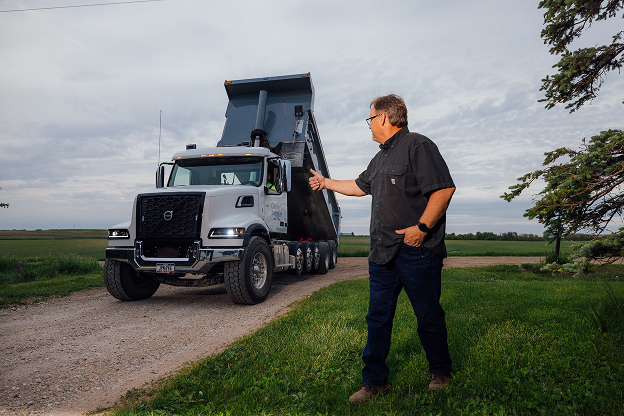
No. We cannot spread materials under trees, beneath powerlines, or on steep slopes.
For dumping, the area must be completely open and level, and the truck must be able to drive forward at least 10 feet to safely unload the material.
No. We cannot spread materials under trees, beneath powerlines, or on steep slopes.
For dumping, the area must be completely open and level, and the truck must be able to drive forward at least 10 feet to safely unload the material.
It depends on your driveway’s length, width, and thickness. Our estimator tool provides quick calculations based on your inputs.
Most driveways use a compacted base of Class A Roadstone or 1” clean rock. If your driveway sits on wet or soft soil, 3” or 1 ½” Clean Rock is the best base.
We provide hauling and tailgate spreading services but not full driveway construction. We’re happy to coordinate with your contractor or recommend local professionals.
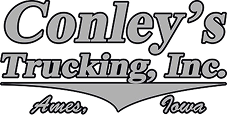
Since 1978, we’ve hauled with pride.